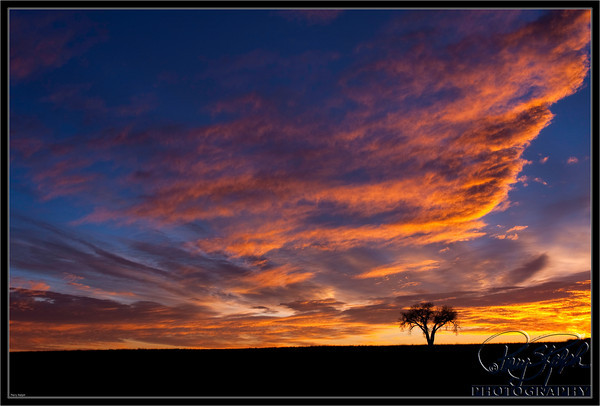I heared an interesting story from Scott Kelby (Photofocus podcast #84) about going back to the same place over and over. Scott was talking about a famous landscape photographer, Bill Fortney, and a comment he made when asked about his beautiful landscape photography that helped me feel better about going back to the lone tree again and again.
"Bill Fortney is showing off this slide show, he has the iconic imange of every place in America you ever want to shoot. He has the Grand Teton Shot. He has the most unbelievable shot of the antelope canyon slots. He's got the horseshoe, .... he's has Yellowstone. Whatever it is, whatever you can think of in the US from lighthouses to craggy coasts he has the ultimate shot from each one of them.
He was showing this slideshow and everyone is speechless. One guy raises his hand and asks "Mr Fortney, how did you get a shot like that of every iconic spot? How did you do it?"
Bill Fortney says, "I am going to tell you, you aren't going to be happy but i will tell you exactly what my secret is. To get the iconic shot of like Glacier National Park, you have to do what i do. i have been there 22 times.
And one of those mornings is just spectactular."
Well, I have gone to the Lone Tree a lot of times maybe not 22 but pretty close. Over the past 3 years, I have gone there during different parts of the year and different parts of the day. The first photo at the Lone Tree (See above) was during the beautiful sunrise season (Jan/Feb. See Post Bronco Orange and Blue Sunrises).
I then went back there in March to capture the Lone Tree with a full moon.
In the summer, I was driving by the Lone Tree just after a thunderstorm and got a nice result from that.
After the first snow this fall in Colorado, there was a very thick foggy morning. I went back to the Lone Tree to get a photo of the tree with snow on the leaves and the fog. I was lucky to get a flock of birds dancing with the tree as well.
It is worth going back to the same place over and over to get the good shot because conditions change every day. I have been there to see this tree in many different days in many different conditions. There are days (like the first sunrise photo) where I can show up, compose, focus and shoot beautiful photos. Mother Nature has blessed me that day.
But I have also been there many times waiting for something to happen or waiting for some beautiful light that just doesn't show up. Although I may try and shoot something, it usually does not make the cut. The key is getting out of bed on days when you want to sleep in and on some days you will be blessed with beautiful sky, clouds in the right spot, a colorful sunrise, or some wildlife that lets you be part of their day.
When I heard the story of Bill Fortney and his comment about being there for 22 days and one of those mornings was specatular, I thought of my Lone Tree. I have four wonderful photos of the same subject over 3 years. I will continue to visit the Lone Tree. I am sure there will be other times Mother Nature will bless me with the perfect time to be there.




